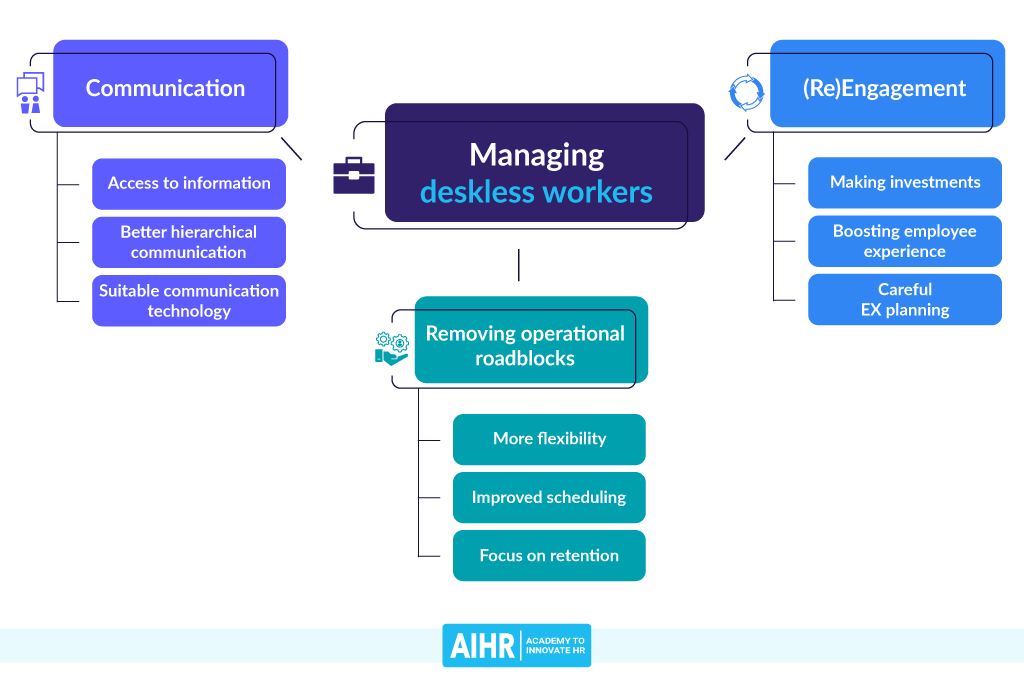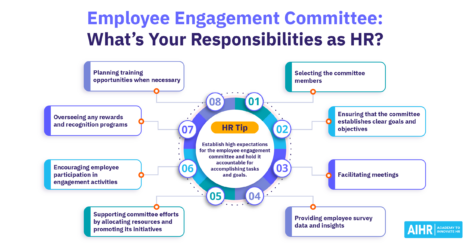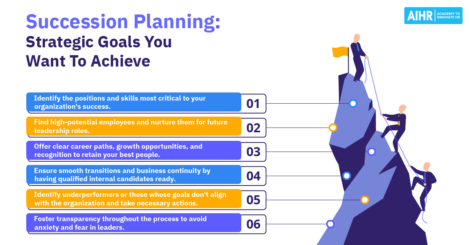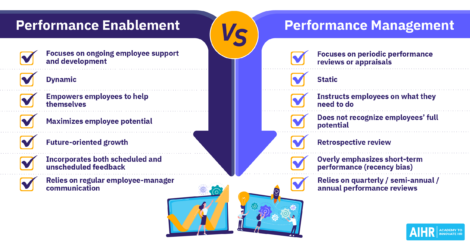9 Tips for Managing Deskless Workers

Managing deskless workers is a whole new ball game these days. The workforce changes that were brought about by both the generation shift and the pandemic put a lot of focus on remote and hybrid work, laying out different options mainly for office workers. But what about deskless workers – how have the changes hit these jobs?
Let’s look at the main pain points for the deskless workforce and tips for managing deskless workers in 2022 and beyond.
Contents
Who are deskless workers?
Deskless workers and communication
(Re)Engaging deskless staff
Removing operational roadblocks
Who are deskless workers?
Who are the workers with no desks? They make up as much as four-fifths of the total workforce in industries like:
- agriculture,
- healthcare,
- retail,
- hospitality and tourism,
- manufacturing,
- transportation,
- and others.
SAP classified deskless workers according to the duration of work (long term work away from home for over a day at a time, short term workers return home after one day or less at work), location (on-site vs off-site), and the level of customer interaction (high or low).
On-site
Off-site
Long-term
Short-term
Long-term
Short-term
High customer interaction
Cruise employees
Flight attendants
Retail store employees
Nurses in hospitals
Consultants
Salespeople
Telecom technicians
Home health aides
Low customer interaction
Miners
Oil rig operators
Distribution center workers
Manufacturing workers
Long-haul truck drivers
Gas pipelayers
Utility line workers
Construction workers
In today’s digital world, the deskless workers were almost forgotten, but they saw one major shift when Covid hit the hardest. Retail employees, manufacturing workers, supply chain operatives, and healthcare workers all went from the back burner to becoming essential labor. The deskless workforce has once again got its spotlight moment.
Talking about the modern workforce as a whole, there’s one point to emphasize. 73% of today’s workers are considered to be digital natives belonging to Generation X, Millennials, or Generation Z. What does this mean for their managers? Well, to oversimplify, it means that these people are more informed than workers have ever been. They have come to expect the same level of employee experience that they enjoy through commercial user experiences privately.
This fact extends to deskless workers as well. Regardless of their hierarchical position, or level of expertise, deskless workers now expect the same level of EX as in other departments, which entails a careful design of the employee journey. As this translates into intricate management, which means time and money, balancing out investments with meeting expectations is the main challenge for workforce managers.
Deskless workers and communication
We can look at communication with deskless workers from multiple standpoints, leading us to different challenges and potential solutions. One of these is the workers’ access to information; another is the quality of communication happening vertically. Finally, we can look at how these influence crucial factors such as EX and employee wellbeing.
Tip #1 – Access to information
According to a McKinsey Global Institute report, workers spend 19% of their working hours looking for information. This means that filing systems, digitalization, and other tech solutions meant to ease collaboration and data availability still have room for improvement. The quoted percentage considers workers in general. We can estimate that the figure rises immensely with deskless workers – due to the simple fact that they do not work at a desk. Handheld tech solutions are still not the absolute norm across all industries.
Possible solutions include not only assigning corporate emails (believe it or not, this is still an issue among deskless staff) but also enabling quick and easy access to the emails. Logically, the story doesn’t end with emails: access to company policies, important updates, and other info also plays a part. With 65% of deskless workers not being provided with additional technology during the pandemic – despite their increased workload – there’s a lot to improve in this area.
Tip #2 – Better hierarchical communication
Another communicational pain point is the quality and quantity of hierarchical – or, as it’s often called, vertical communication. In a typical corporate setting, decisions are made at the top; the results and outcomes are then filtered down. The opposite direction usually has reports traveling up from teams to supervisors, mid-level managers, upper management to C-level executives.
This lack of communication can entail a lack of appraisal and appreciation, inadequate management, and disrupted workplace relationships in general. All of these lead to an increase in job dissatisfaction.
A trend among managers for deskless workers is the Gemba walk. It essentially forces managers to leave their offices and mingle among their workers. This is an opportunity not only to do a boss walk but to take the time to listen and show appreciation and respect.
Tip #3 – Suitable communication technology
According to a survey done during the biggest hit of the COVID pandemic, the state of technology with deskless workers has a lot of room for improvement. 60% of them are not satisfied with the tech provided to do their work. That makes perfect sense considering the fact that 83% of these deskless workers get desktop or laptop computers.
Making sure that deskless workers have easy access to information begins by ensuring they have the means for the mentioned access – and that starts with tech and gadgets. Some companies are way ahead. UPS is currently using the fifth generation of their handheld computers, which enabled them to increase efficiency. Retail stores have also been issuing mobile devices for staff, with custom-made apps that ultimately drive growth.
Connecting this point to a previous one, the deskless workers of today know the benefits of technology very well. They expect the best solutions regardless of their hands-on workplace.
(Re)Engaging deskless staff
With communication going awry and seeing that organizations are not investing as expected to improve the day-to-day work for deskless staff, it’s easy for this part of the workforce to start feeling neglected. Being on the back burner of your managerial staff can cause disengagement and a sense of disconnection. Here are some ways to beat these to the draw.
Tip #4 – Making investments
Research data shows that deskless personnel makes up 80% of the total workforce – and the total workforce amounts to around 2.7 billion people. What makes zero sense in this context is the fact that only 1% of all business software investments are made towards deskless staff tech.
The solution is simple, and it has begun to happen: the manufacturing and the transport industries are ready to invest more. Their main motivation is the significant boosts in productivity and cost savings – 33 and 21%, respectively. Another point is the expected improvement in employee experience – 23%!
Tip #5 – Boosting employee experience
One big improvement for workers that happened during the pandemic is an increase in appreciation, especially for frontline workers. On top of that, the dynamics of the workplace have changed, with hybrid and remote options coming into the mainstream – but not for deskless workers. This means that deskless labor will seek other ways to improve their position.
A careful design of the employee experience (EX) is holistic. It begins with the job ad and the interview, provides smooth sailing through onboarding and actual work, with more and more focus being put on offboarding as well. Good (digital) employee experience leads to better engagement and much fewer mismatches between management and employee expectations.
For managing deskless workers, this means a more clear and structured focus. The hybrid/remote shift stole the spotlight in recent years, but deskless EX remains a physical experience for the most part. A recent survey showed that 72% of deskless workers don’t have access to the same digital tools as their desk colleagues.
An example from retail stores shows that one thing is becoming apparent: digital tech can mitigate errors, but it cannot replace the human experience. As we come full circle with the pandemic and people begin to value actual in-person communication, deskless workers once again become important. After all, they’re the first contact point for customers in many industries. This puts value on retention, shifting the mindset of employees being costs to manage to employees being assets to maximize.
Tip #6 – Careful EX planning
Tying it to the previous point, designing the employee experience should be strategic and well-thought-out. When trying to put a plan into action, it makes sense to take lessons from other departments – such as marketing or sales – and apply them to your HR managerial tasks.
Some examples include segmenting the workforce you work with, creating target personas, and making job journey maps for your labor. That way, you will have a better understanding of the type of workers you’re trying to reach. They will have a clear view of their career path within the company. Establish clear metrics for your EX and engagement to measure the effectiveness of your initiatives.
The difference in designing EX for deskless workers is not that wide of a gap. You still need to establish a clear mission and purpose, and you still need to align them with strategic priorities. However, nowadays, the strategic priorities are shifting from mere production metrics, with retention and well-being coming into play. Add a dash of positive cultural experience, insist on supervisors leading by example. That way, you’ll have a neatly designed EX that’s more than applicable for deskless workers.
Removing operational roadblocks
With all of the above dealing with some aspects of deskless worker management that might seem less tangible – or even abstract – we must not forget the operational challenges as well. The deskless workforce spans industries and job types. What’s more, each workplace comes with its own set of problems and risks. However, there are some general shared issues, so let’s look into those.
Tip #7 – More flexibility
One other thing the last two years have taught us is that nothing is set in stone, regardless of how we would like some things to be so. The common denominator for many of these issues is the level of flexibility that managerial staff is ready to implement into their processes.
Flexibility has proven to be not only beneficial for the workforce (from a practical point of view), but also a driver of general improvements. The most important points are the ability to communicate better, create, and collaborate on innovations. For deskless workers, who experience work a bit differently than their desk-ridden colleagues, flexibility is an opportunity to exercise their right to a better workplace and improve upon common pain points – such as their work-life balance.
Even though employers haven’t been too keen on allowing employees to choose their shifts, it turns out that deskless workers understand the specifics of their positions and that, for example, remote work simply doesn’t translate correctly. What they crave is much simpler – being able to choose their shifts and thus strike a better balance. Using apps that streamline all communication – towards management, their colleagues, and providing real-time updates on shifts, sick leave, etc. – provides the ideal opportunity to give the people what they essentially want.
Tip #8 – Improved scheduling
One very tangible aspect of general flexibility for your labor is scheduling. A majority of all shift workers are deskless employees. Scheduling for shift workers is a huge challenge on all fronts. This was so pre-Covid, and lockdowns, stay-at-home orders, and infections only amplified this problem to sometimes immense proportions.
Managers and schedulers have tried different approaches to scheduling in the last three years. A common thread emerged out of this testing period: flexible scheduling benefits both the workers and the business, ensuring coverage of all shifts. Aside from that, introducing simple tech solutions to enable self-scheduling and real-time change notifications empowers workers to plan their days and weeks. Therefore, it’s only logical to introduce it into the work processes.
Tip #9 – Focus on retention
One of the top concerns of managers across industries is productivity. However, the focus is beginning to shift. Managers are beginning to understand that productivity is closely related to happy and satisfied labor. Some figures not only spark worry but are not sustainable in the long run – such as a 100% employee turnover in workplaces such as supermarkets and quick-service restaurants.
The employer-employee relationship used to be very different. The employer held the power, often providing only the bare minimum for the workers to get their jobs done. However, the shortage of talent, the reduced friction for job change (followed by the Great Resignation), and the steep increases in salaries that aim to fill open positions have tipped the balance point severely towards the workers.
The workforce of today is making other small shifts, such as not being willing to “power through” illnesses to come to work. However, 51% of them still do so simply because they can’t afford sick days. This example illustrates the disparity between wants and expectations and the reality that a lot of deskless workers still face. Carefully working on all the points we listed above will improve employee retention, which leads to engaged and motivated workers, which closes the circle by increasing both productivity and employee satisfaction.
Parting thoughts
If you’re sensing a leitmotiv, or a theme running through this entire article, you’re on the right track. Simply caring for your employees better – which includes monitoring current and new trends and their applicability to your workplace – is a big driver of job satisfaction.
Being holistic in your caring efforts is the secret sauce here. Make sure you have a clear layout for employee experience and that it covers all aspects of your staff’s workday. It’s time to step up your game and make sure your deskless workers have a great time working with you!
Weekly update
Stay up-to-date with the latest news, trends, and resources in HR
Learn more
Related articles
Are you ready for the future of HR?
Learn modern and relevant HR skills, online













